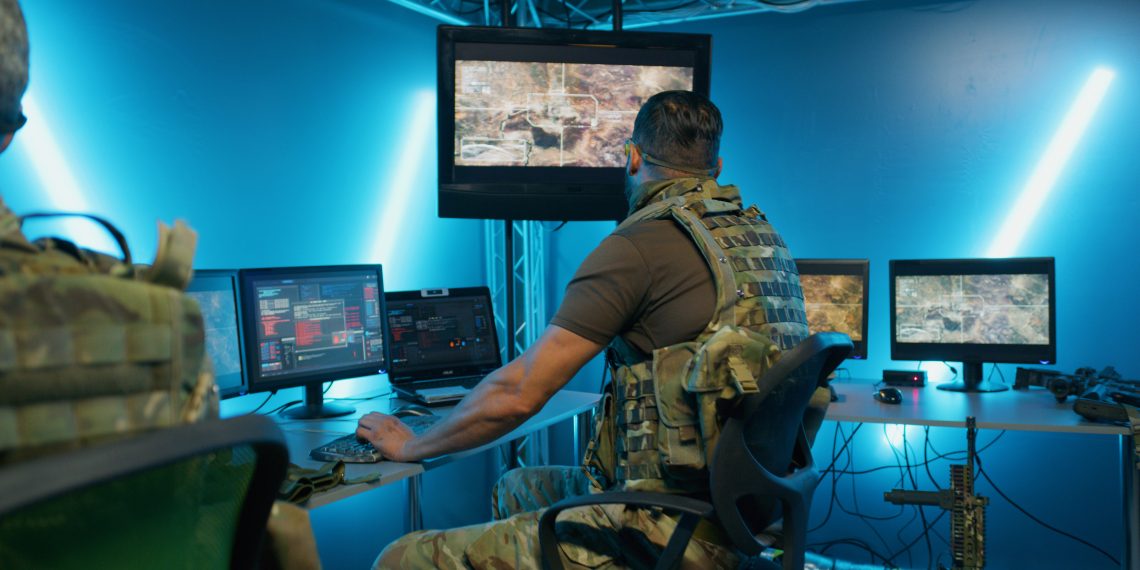The Top Three Challenges Impeding the DoD’s CJADC2 Vision
In the planning and execution of a military mission, it is paramount that key decision-makers receive real-time operational data that will provide them with situational awareness and a full operational picture of the battle space.
Mission success, regardless of the domain, depends on the sharing of critical data across the joint and partner forces that enables rapid and informed decision-making.
Quite often, the data that is required for operational success must be proliferated and shared across multiple domains. That is why the U.S. Department of Defense (DoD) has created and developed the Combined Joint All Domain Command and Control (CJADC2) initiative, a vision that enables the military to share a common operating picture (COP) of warfighting environments across the joint and partner forces that empowers decision-makers to “Sense, Make Sense, and Act.”
In their recently released whitepaper, “Delivering the CJADC2 Mission of Sense, Make Sense, and Act,” Sigma Defense – a leading technology company that specializes in integrating C5ISR systems and data across the DoD – examines the challenges that the military is currently facing as it pertains to the realization of the CJADC2 vision.
In addition to understanding the roadblocks that are impeding the DoD’s CJADC2 mission, Sigma Defense also outlines an approach to overcoming these challenges and how the military can truly fulfill its CJADC2 mission. Here are the three largest challenges keeping the DoD from reaching its CJADC2 goals:
Acquisition Challenges
The DoD is comprised of many organizations that will need to connect and operate under the CJADC2 umbrella. Over time, each of these organizations have acquired and accumulated operating systems, solutions, and technologies independent of each other, with most systems being vendor proprietary. As a result, they have been essentially operating as siloed, purpose-built endpoint solutions.
Employing technologies and systems that are siloed and not vendor-agnostic ultimately equates to the DoD operating with multiple bespoke and proprietary technologies that are not flexible, nor interoperable, and do not easily share data. If the DoD continues to acquire and deploy proprietary systems from separate vendors that cannot interoperate across the force, the vision of CJADC2 will never be realized.
Another acquisition challenge that the DoD is currently facing pertains to the allocation of funding not being aligned to support the various elements that fall under the CJADC2 umbrella. To adopt a ubiquitous strategy to address the challenges of CJADC2, the funding needs to be aligned not just at the command level, but applied across various POMs (Program Objective Memorandum).
Organizational Challenges
In addition to the acquisitional challenges siloed operating systems pose to the DoD’s CJADC2 mission, there are organizational challenges that contribute to the challenges of delivering fully integrated military capabilities. When branches and organizations across the DoD and partner and coalition forces can share data from vendor-agnostic systems they can realize and leverage new capabilities that can achieve the CJADC2 mission of decision dominance. Unfortunately, due to the deployment of purpose-built and siloed solutions that are unable to translate and connect across systems, many of these potential capabilities are not available.
Not only do these missed opportunities affect the overall success of CJADC2 and subsequently, the military writ large, these siloed and untranslatable systems lead to the costly duplication and expenditure of resources across the DoD. To achieve true CJADC2 success, the new policies of integrating a Modular Open Systems Approach (MOSA) to commercialsystems need to be enforced.
Technical Challenges
The various DoD functional areas having their own set of independent systems and technologies also contribute to technical challenges, which further slows the realization of CJADC2. When each organization operates within proprietary and closed systems, there is no opportunity to have integrated and interoperable functioning that the CJADC2 vision calls for. This is especially true for proprietary systems, as many companies will have their own interfaces and are usually unwilling to divulge any information on standards they use for their hardware and software that could lead to vendor interoperability.
Other technical challenges surrounding CJADC2 include the inefficient use of inter-governmental data. Data transport and networking across organizations is already technically complex as we have addressed, however, layering on necessary security protocols further complicates and slows the sharing of information.
The DoD faces issues with regard to the latency, resiliency, and throughput of data, which can leave sensitive military data vulnerable for exploitation. This is especially true for mobile devices and communications-on-the-move (COTM) missions that are often executed in highly contested environments where degradation and connectivity interference by adversaries is common.
Conclusion
In order to fulfill its CJADC2 mission, the DoD must deploy technologies that will be able to transcend the acquisition, organizational, and technical challenges that currently stand in its way. These solutions must leverage vendor-agnostic, opensource, open standards, and open data posture approaches that can serve as the “connective tissue” of the CJADC2 framework. They must also allow the DoD to leverage existing and currently deployed technologies, leading to shorter and more efficient lead times to capability employment, while saving DoD budgets from making new and costly investments.


